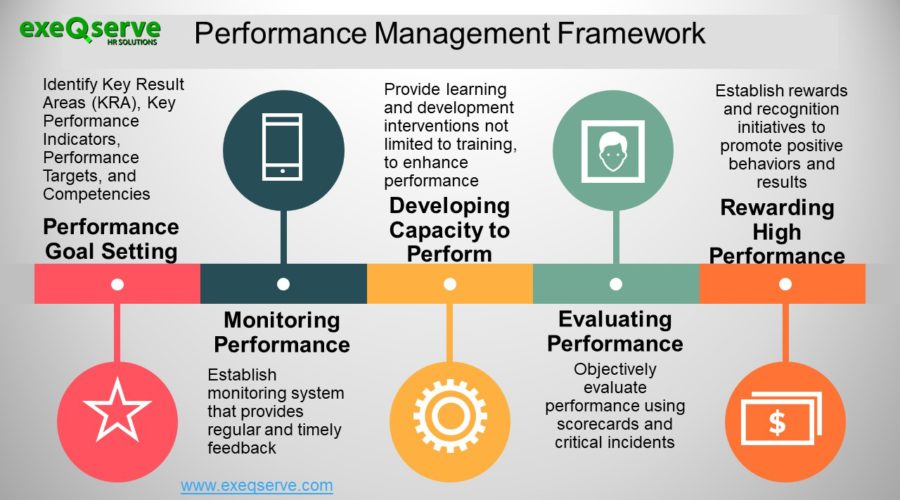The individual performance plan is the basis for the performance agreement. The content of this plan is used to construct one component of the performance agreement. Also, remember that the performance management process for individual staff forms part of the total performance management process (strategic, department, individual). The individual performance plan holds the details of the work the person will be doing over the next 12 months.
The process for establishing the performance agreement with staff is as important as the performance agreement itself. If staff feel aggrieved by the process they are unlikely to be motivated to achieve the targets set.
Step 1: Carefully Consider the Divisional Plan To Formulate Expected Performance
The following steps must be taken before the discussion:
- Review any existing individual performance agreement. Note what has and what has not been achieved.
- Set aside at least one uninterrupted hour for the performance planning and agreement meeting.
- Review the relevant business/department/team plan so that you are familiar with the key outputs required by the business relevant to the work you do.
- Consider any issues that might arise during the meeting so that you will be fully prepared for any event.
- Think about how you will create a positive atmosphere in the meeting (by not being defensive, demonstrating that you have some good ideas, listening to the other person carefully, asking for clarification when necessary, and so on).
The following steps should be taken during the discussion:
- When the meeting starts make sure that both you and the staff member have all the materials you need, including previous performance agreements, business/department/team plan and preparatory notes.
- The manager/supervisor has to play a lead role in facilitating this meeting but should not dominate the discussion. Always ask the staff member for his/her views rather than giving a solution before he/she had an opportunity to participate in the discussion. The manager and staff member should each be speaking for around 50% of the time.
- The manager/supervisor should set the performance context for the staff member. Discuss the priorities of the business and the department or team to which the staff member belongs.
- Stick to the facts. Do not let personality differences get in the way of a productive meeting.
Step 2: Completing the Individual Performance Agreement Form: Personal Details
Keep the following in mind:
- You need a new form for each annual individual performance agreement.
- You should complete all the details in the first section.
- Refer to the performance evaluation definitions when completing the form.
Step 3: Complete the Performance Plan
The key to completing this section of the performance agreement form is for the manager and staff member to agree on the key performance/results areas, and the major goals and objectives the staff member needs to undertake in the following 12 months.
Do not try to capture all the results the staff member must achieve. The idea is to capture the most important ones only. Use the 80/20 principle.
Be specific in the descriptions you use. Each performance result must be measurable. Measurable can include the number of outputs/services expected, the quality of results and timeline targets.
If the role of the staff member is administrative or supportive in nature, they should be viewed as servicing internal customers. The performance results should contain the most important contributions that the person makes in servicing the internal customer.
Copies of the relevant business plan, team plans, and staff member’s job descriptions will be useful when completing this section.

Step 4: Ensure that All the Critical Areas of Performance are covered by the Identified Goals/KPA’s and Objectives/KPI’s
You should make sure that you have covered all areas of responsibility mentioned in the staff member’s job description. Make sure that all day-to-day responsibilities, which are not indicated on the job description, are also covered. You can ask the staff member to run you through a typical week for you to get a good idea of all the job responsibilities and functions.
Ensure that all the departmental goals and objectives are covered.